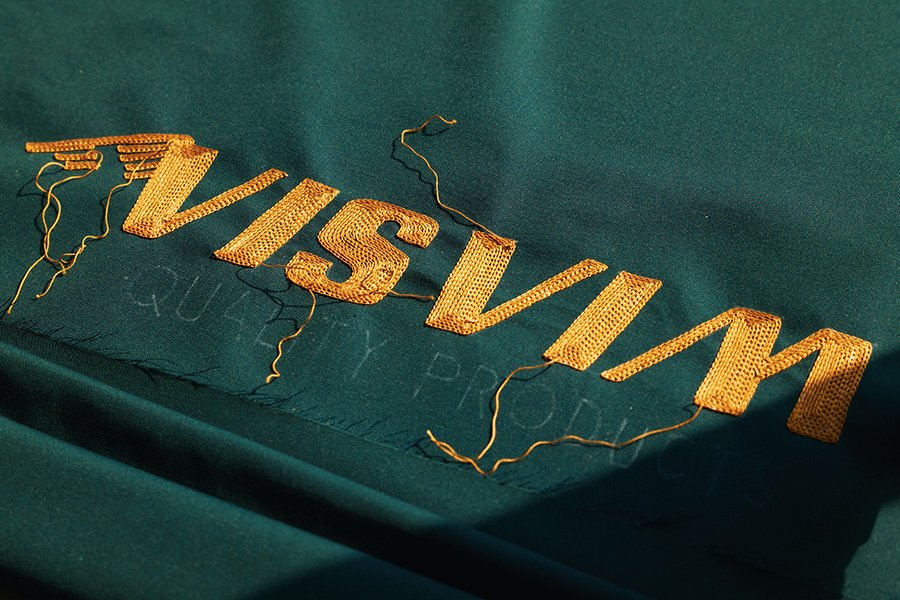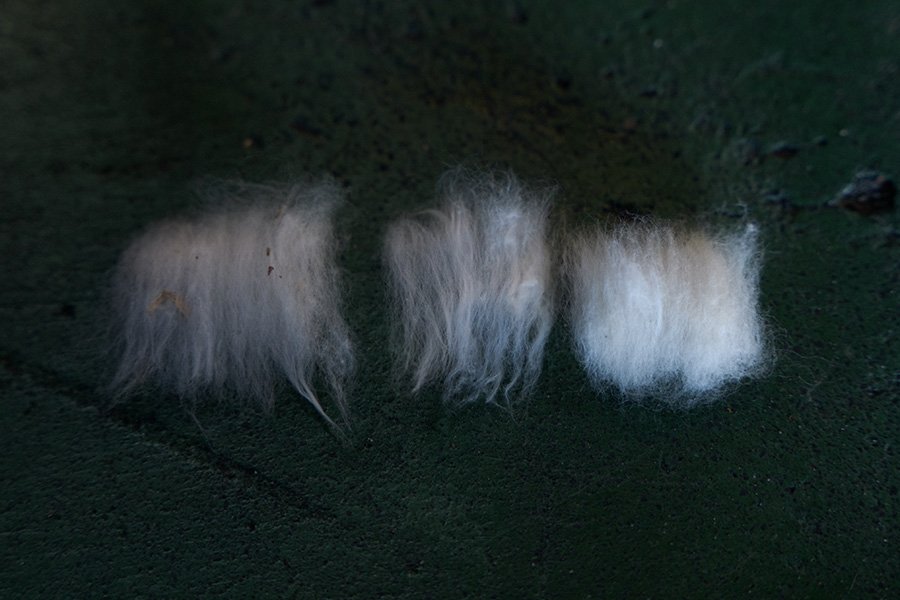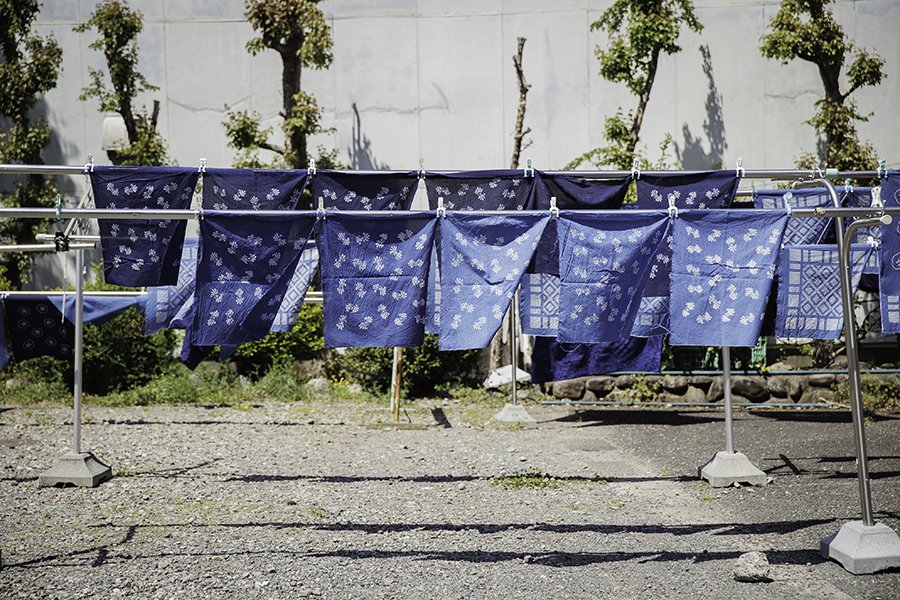Dissertation
Chusen
Since the Edo period, Hamamatsu City in Shizuoka Prefecture has been one of Japan's leading cotton textile producing regions. The traditional fabric produced there, known as "Enshu Men Tsumugi," has long been used to make clothing for the common people of the area. A traditional Japanese dyeing technique that has been passed down for over 100 years can be found in Hamamatsu.
| Category: | Processing |
|---|
| Date: | 2016.08.16 |
|---|
| Tags: | #chusen #visvim |
|---|

Rediscovering the traditional Japanese dyeing techniques of "nijimi" (ink bleeding) and "bokashi" (gradation) that have been passed down for over 100 years.
Since the Edo period, Hamamatsu City in Shizuoka Prefecture has been one of Japan's leading cotton textile producing regions. The traditional fabric produced there, known as "Enshu Men Tsumugi," has long been used to make clothing for the common people of the area. A traditional Japanese dyeing technique that has been passed down for over 100 years can be found in Hamamatsu. "Chusen," which derived its name from the Japanese phrase for "pouring dye," is a traditional dye blocking method that pours dye onto the fabric with a watering pot-shaped tool to create random patterns while applying glue to specific parts of the fabric to prevent them from being colored. The dyeing, which is done completely by the hands of highly experienced artisans, results in a blend of soft features thanks to the unique ink bleeding and gradation of the color patterns.

The chusen dyeing technique was developed in Osaka during the Meiji period, and was passed down to artisans in Hamamatsu. The technique initially spread as a means of dyeing tenugui, or traditional Japanese hand towels, but after the Great Kanto earthquake of Taisho 12 (1923), many artisans involved in the manufacturing of yukata (informal cotton kimono) who lived in the Tokyo Metropolitan area moved to Enshu (the western part of Shizuoka Prefecture), which prompted an increase in the creation of hand-dyed yukata using the chusen technique.
Yukata production reached its peak during the third decade of the Showa period (1950s), but soon declined due to changes in lifestyles and the flood of cheaper foreign products. The number of factories that used the chusen technique also dropped. Where there used to be close to 100 factories, today there are only a handful left in the region.


Stemming back from when the company was founded in Showa 2 (1927), Nihashi Senkoujyou Co., Ltd. has produced countless luxury chusen products. Handling all aspects of the dyeing process, from sarashi (bleaching), dyeing, drying, and finishing, where these techniques have been preserved and passed down until even today. Every day inside the factory, artisans work silently with fabrics and dyes.



First, a pattern is placed on top of the bleached fabric, and a dye-resistant paste made from a mixture of clay, sticky rice flour, and seaweed is spread repeatedly using a spatula to trace the pattern onto the fabric. The fabric is then placed on top of a special dyeing bed, and after the dyes are poured onto the surface of the starched textile using a tool called a "yakan," it is sucked from below by a compressor (a vacuum pump), allowing the dyes to permeate the layered textiles. Repeating this process results in the exact same color shade and pattern quality on both sides. The fabrics are then washed with water, and hung from the ceiling to dry under sunlight in a drying area. Once dry, they are rolled out to eliminate wrinkles, and then passed on to the finishing process, where they are cut to shape.



The preparation and color bleeding of the dyes, as well as the degree of dye permeation to the layered fabrics may fluctuate due to aspects such as the type of materials used, the temperature and humidity, and even the slightest differences in the timing of the work, so the sensitivity of experienced artisans is required. The depth of the patterns created by the distinct color bleeding and the slightly random contours cannot be reproduced with print dyeing that utilizes machines. We would like to bring this unique technique, which is found only in Japan, to the attention of more people.


Edit & Text: Kosuke Ide
Photo: Keisuke Fukamizu
Movie: cubism










